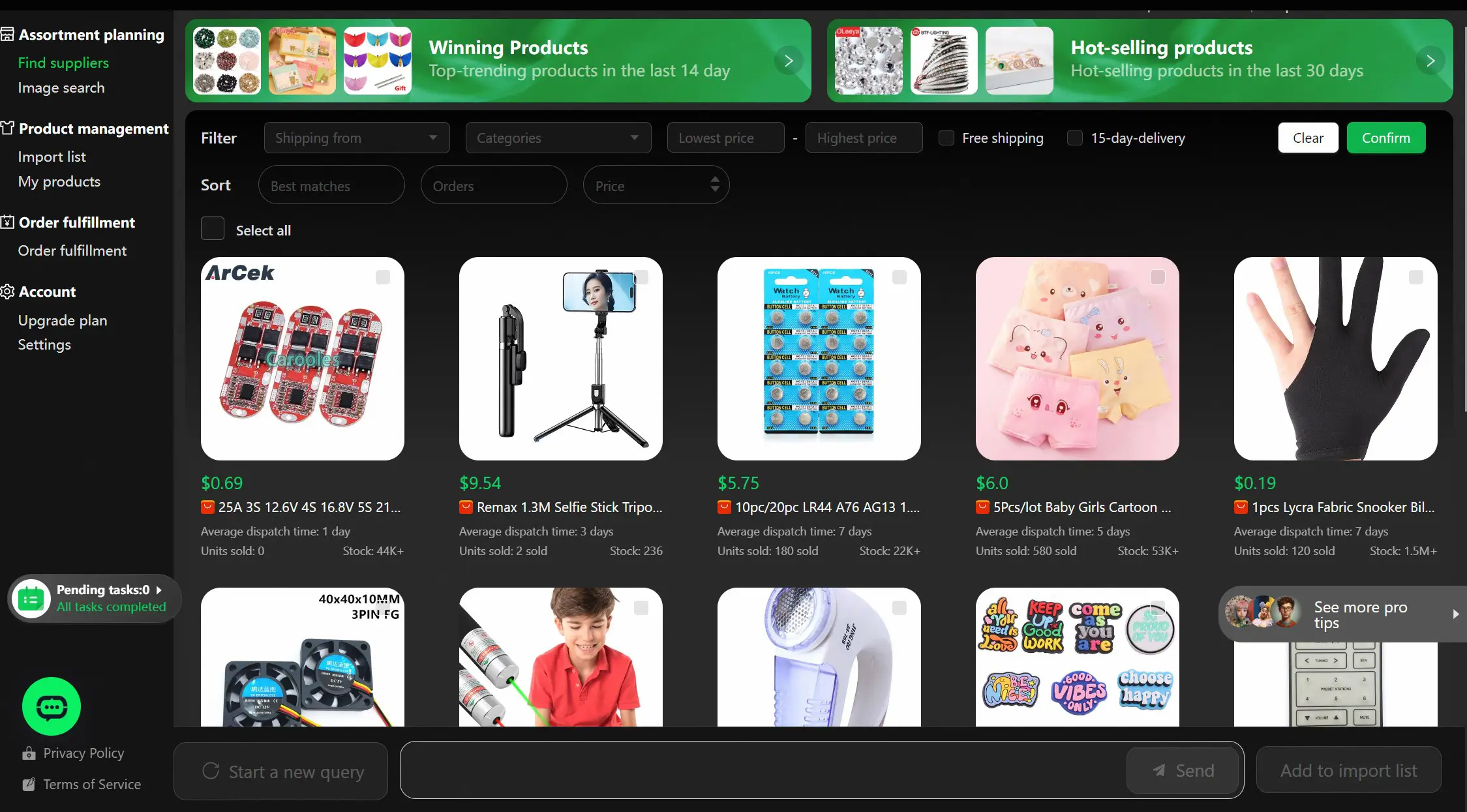I. Introduction
Dropshipping has fundamentally altered the landscape of e-commerce businesses by enabling entrepreneurs to kickstart ventures without investing in inventory. Dropshipping is a retail fulfillment technique where a store doesn’t have the items it offers in stock. Instead, after a product sells, the seller buys the item from a third party—typically a manufacturer or wholesaler—who then sends it straight to the client. The capacity to competently recognize and capitalize on product trends is a critical factor in guiding the ship of a dropshipping firm toward success.
Recognizing and capitalizing on trendy products can significantly increase brand visibility and client acquisition while also helping boost sales. It takes a delicate blend of art and science, strategic analysis, and quick execution to expertly sift through the myriad of items and select the ones that will resonate with consumers.
II. The Importance of Spotting Trends Early
Identifying trends early in their trajectory presents a potent opportunity for dropshipping businesses to keep one step ahead of the competition. When an enterprise is among the first to market a trending product, it has the strategic advantage of being a primary source for consumers, which can aid in establishing its reputation as a trendsetter in the industry.
An early understanding of popular products guarantees that the company can quickly adapt to market expectations, increasing client happiness and loyalty. Furthermore, it opens up a window to maximize profit potential before the market becomes saturated with similar offerings. Riding the wave of a trend in its infancy allows businesses to position themselves optimally, harvest the peak demand, and possibly even partially dictate the market’s trajectory.
III. Key Sources for Trend Discovery
- Social Media
In the digital age, social media platforms have emerged as powerful barometers for gauging product and cultural trends. By closely monitoring these platforms, dropshipping businesses can learn about the interests of their customers.
- Monitoring trending hashtags: Platforms like Twitter and Instagram have features that spotlight trending topics. By sifting through these hashtags, businesses can detect products that are gaining traction among users.
- Influencer partnerships and product endorsements: Influencers often serve as early adopters for various products. By collaborating with them or simply observing the products they’re endorsing, dropshippers can identify potential trending items. An endorsement from a major influencer can rapidly accelerate a product’s popularity.
- Observing viral products and discussions: Platforms like TikTok and Instagram are rife with product-focused content that can go viral overnight. Videos showcasing innovative or unique products can garner millions of views decisively, indicating a surge in interest and potential demand.
- E-commerce Platforms and Marketplaces
E-commerce giants like Amazon and AliExpress can be treasure troves for dropshippers searching for trending products.
- Browsing best-sellers list: Most e-commerce platforms have sections dedicated to best-selling products. Regularly reviewing these lists can help dropshippers identify products currently resonating with a large customer base.
- Checking “recently added” or “trending” sections: Some platforms offer insights into recently listed products gaining traction. This can provide early signals for products that might have a significant impact.
- Keyword Research Tools
Tools for keyword research can give organizations a clear view of the internet searches that people are making right now, providing them with crucial early warning of new trends.
- Tools like Google Trends, SEMrush, and Ahrefs: These platforms allow users to evaluate the search volume of specific terms over time. A sudden spike in searches for a particular product indicates rising interest and potential demand.
- Spotting rising search queries: By monitoring which queries are witnessing a steady increase in volume, dropshippers can forecast which products are on the cusp of becoming trends.
- Industry Publications and Blogs
Traversing through industry-specific publications and blogs is pivotal for any dropshipping business aiming to keep its finger on the pulse of emerging trends and innovations.
- Regularly reading niche-specific blogs: Engaging with blogs that cater specifically to dropshipping and e-commerce domains can provide insights into upcoming products, strategies, and market shifts.
- Following industry news sources: By staying updated with news portals and publications focused on retail and e-commerce, dropshippers can stay informed about product launches, company collaborations, and notable market shifts.
- Consumer Review Platforms
Direct feedback from consumers can be instrumental in identifying potential trends and uncovering products that are either adored or deemed lacking by the market.
- Reading reviews for insights on popular products: Products with a surge in positive reviews on platforms like Amazon or AliExpress could be an indication of a growing trend.
- Observing common complaints to find product improvement opportunities: Reading through negative reviews can offer insights into product flaws and potential enhancements, providing an avenue to offer a superior alternative and tap into unsatisfied demand.
IV. Analyzing and Validating Trends
Ensuring that determinant trends have genuine and sustainable market demand is crucial before investing resources into sourcing and marketing products.
- Volume vs. Saturation
- Evaluating search volume and competition: Utilizing keyword tools to ensure that interest in a particular product is not only high but also balanced with a level of competition that is surmountable for your business.

- Consumer Demand
- Conducting surveys or polls: Engaging directly with your existing customer base through surveys or polls can validate whether the identified product aligns with their interests and needs.
- Checking product reviews and feedback: Reviews can be analyzed to confirm the viability and popularity of a trend in the target market in addition to spotting trends in them.
- Market Gap Analysis
- Identifying underserved needs: This involves pinpointing niches or needs in the market that are not adequately addressed by current offerings. These needs will be the opening to open up a new blue ocean market.
- Looking for products with limited availability: Identifying products in demand but not widely available in particular regions or segments can uncover lucrative opportunities.
V.Adapting and Implementing Trends
Once trends are identified and validated, the next step involves sourcing the products and devising a robust marketing strategy.
- Sourcing Products
- Finding reliable suppliers: Establish a network of trustworthy suppliers, using platforms like AliExpress or Shopify. It’s essential to prioritize quality, reliability, and communication.

- Negotiating terms and ensuring quality: Before forging a partnership, negotiate favorable terms and order samples to ensure product quality meets expectations.
- Marketing and Promotion
- Targeting trending product ads to the right audience: Leverage platforms like Facebook Ads and Google Ads, ensuring your advertising targets demographics most likely to be interested in the trending product.
- Utilizing social proof and testimonials: Showcase user reviews, testimonials, or user-generated content to build trust and validate the product’s value to potential customers.
- Feedback Loop Creation
- Regularly collecting customer feedback: Post-purchase surveys or feedback forms can offer insights into product performance and potential areas of improvement.
- Iterating based on insights and observations: Using feedback to make necessary adjustments in product offerings, descriptions, or marketing tactics ensures continuous alignment with customer expectations.
VI.Conclusion
The world of dropshipping is dynamic and ever-evolving. It demands constant vigilance, adaptability, and a keen understanding of market movements. The process of spotting trends, while challenging, offers businesses the opportunity to stay ahead, remain relevant, and consistently meet the needs of their audience. By establishing a systematic approach to trendspotting, analysis, and adaptation, dropshipping businesses can ensure that they not only catch the wave of trending products but also ride it to sustained success. As the cycle of trendspotting is continuous, businesses should remain proactive and always be on the lookout for the next big thing, ready to adapt and thrive in the fast-paced world of e-commerce.